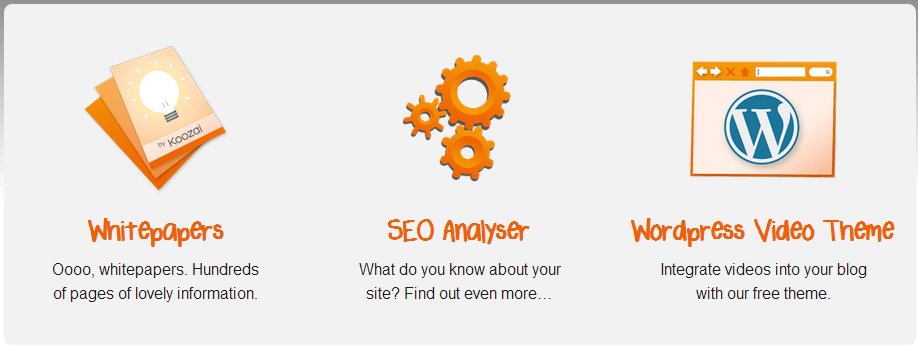 The purpose of B2B Content Marketing is to acquire and nurture leads, in order to turn those leads into constant conversions. Think of your content as information businesses want to consume. If your brand regularly produces tasty content that other businesses constantly want to eat up, then you’re taking a step in right direction in collecting and converting leads.
The purpose of B2B Content Marketing is to acquire and nurture leads, in order to turn those leads into constant conversions. Think of your content as information businesses want to consume. If your brand regularly produces tasty content that other businesses constantly want to eat up, then you’re taking a step in right direction in collecting and converting leads.
Let’s take a look at a process to do this:
The B2B Content Marketing Process
1. Strategy And Planning
First things first, what are you aiming to do? By outlining your aims right away you’re giving yourself a clear and structured path to follow throughout the campaign.
One of the most common aims when it comes to this kind of marketing is to generate leads, or in other words, finding interested businesses to sell your services too. Find out what people want, and work toward producing that.
Ask yourself, is it relevant? Is it helpful? Would you want to share it with your friends?
If you answered yes to at least one of the above questions, then there’s a good chance you’re on the right track.
Aim to produce a series of similarly themed content. Don’t get me wrong, short one off’s and random rants are great, but if you can create a string of content that establishes your brand as an authority in certain topics, then that’s much more valuable in the long run. Look at Wistia’s Learning Centre to see how they use regular videos to show off their technology and capture audiences.
Think about what platforms you’re going to use, and how you can use them to the best of their abilities. Take a look through your previous campaign reports and look at what has particularly worked, and what hasn’t. Ultimately you must learn from your mistakes.
2. Creation
This is the fun part, or at least it is for us creatives. After carefully planning and articulating a potentially award winning strategy (because let’s face it, why should you aim for anything less), it’s time to put pen to paper so to speak and get cracking on creating your content.
Identify your team’s expertise and allocate the relevant creative duties to the applicable people. If you don’t possess an employee who’s qualified or skilled enough to create a certain piece then there’s plenty of options available.
You could always bring in a freelancer, who’ll work alongside your team to ensure that the content is created to your standards.
Alternatively, you could outsource the work to someone else. This could either be your best decision ever or your worst nightmare. Ensure that you only outsource work to trusted resources and that the designer completely understands your expectations.
Remember you get what you pay for here, so don’t just jump on Fiverr and expect a ground-breaking piece of art. Be meticulous about who you pick to create your work, because remember; whatever they produce will reflect your brand.
3. Promotion
I’m going to say something that flies completely in the face of capitalism here, but hey what the heck:
Give valuable information away freely.
Before all you folks in suits start edging away nervously, hear me out.
Let other people know just how brilliant your ideas /services /products are by giving them a first-hand experience.
I’m not saying you should work for free and show all of our cards straight away. Knowledge is power, and knowledge is incredibly valuable. By giving away content such as informative blog posts, white papers and videos, you’re actually freely advertising your brand to others.
Like so:
 There’s loads of useful information over on the Koozai Resources page
There’s loads of useful information over on the Koozai Resources page
Remind people that it’s just the tip of the iceberg though, and that you’ve got a whole lot of goodies stashed away in a treasure chest somewhere that they can access by working with your business.
Oh and don’t worry about the competition stealing your ideas. If your competitors have to scrape your ideas instead of developing their own, then you’re practically winning already.
It’s important that you keep your original goals in mind during the promotion process. Understand what you are trying to achieve and adjust your promotion techniques appropriately.
When it comes to driving traffic to your content, look at the key influencers for the markets you’re targeting. My fellow Content Marketer Cat Fyson recently posted a brilliant article on identifying influencers, so check it out for more information.
4. Conversion
Be honest with your audience, don’t sneakily hide away your CTAs, display them loud and proud. Besides, if you’re supplying amazing content, that should do half the selling power for you.
People spend and buy all the time. That’s how the world works. Despite this, people hate being sold too. No one enjoys cold callers, unless you’re aiming on pranking them, and the door to door salesperson is certainly not the most revered and sought-after position (which, according to Forbes, is a Software Developer, in case you were wondering).
Sales people are no longer the first point of contact. The digital landscape allows for consumers to conduct their own research and gather the information they need, without even considering a salesperson; which is why your businesses landing pages, websites and PPC campaigns all need to be properly optimised in order to bring in the maximum amount of revenue.
Don’t forget that businesses will have different purchasing behaviour from consumers. Your clients will have a set budget to spend, and a set time frame within which to purchase your services, meaning you’ll need to give them content that justifies their spend.
So what can you do to get the highest conversion rate for your content? Use the combined efforts of your company’s employees to create amazing, unique, worthwhile content, that in turn showcases the brilliant skills possessed by your team.
You can then repurpose that content into different formats in order to make it truly earn its keep. I’m not talking about copying and pasting old blog posts or changing the release date on articles to make them seem relevant. I’m saying you should repackage your content into new forms, such as an turning an infographic into a video, or a Twitter Chat into a blog post, and gain more exposure.
Everybody is different, meaning everybody consumes content in different ways. Person A may love a short video, but Person B may prefer a no-nonsense essay. By repurposing your content, you’re giving it a much better chance of being consumed by a wider audience. This in turn will help increase the chance of conversions.
5. Assessment
This part is probably the most vital to truly understanding the success (or failure) of your B2B marketing campaign.
It’s time to crack open your preferred analytics software and explore all the wonderful data generated by your campaign. There are all kinds of analytics tools out there that’ll provide you with invaluable information about your campaign, but for ease of use let’s look at Google Analytics for now.
Segment your data and decide which metrics you’re going to evaluate. Look to measure the three following forms of engagement:
- User engagement – such as the click through rate on your PPC campaigns, landing pages and shared content.
- Social engagement – comments, likes, shares, follows, retweets and other similar metrics across social media; as well as mailing list sign ups and content downloads.
- Direct engagement – leads who have got in direct contact with you to request contact.
Take all of this data on board, and use it to identify what parts of your campaign worked, which didn’t really have the intended impact and which areas you could improve for the next time.
So that’s a basic, very quick look at the B2B content marketing process, but what happens when it’s actually put into practise?
Case Study:
Although they are primarily a B2C company, UK mobile network providers Vodafone also run a number of B2B campaigns to promote their mobile plans for the public sector.
In order to increase brand awareness for Vodafone within the work environment, they teamed up with business marketing company Base One to create a content-led campaign.
Having carried out in-depth research that suggested peers have more influence over industry leaders than the suppliers do; they decided to create content focussed on ‘public perspectives’. Through video interviews, case studies, articles and how-to guides (along with an assortment of other supporting content types), a solid campaign was created utilising users to create ‘hero content’.
They over-achieved on nearly all their target KPIs and directly engaged with 34% of the public leaders who saw the campaign. This generated 9 high quality leads, with an estimated monetary value of £1 million. It was so good in fact that it was shortlisted for the ‘Best Use Of Content Marketing’ award at the 2013 B2B Awards.
What does this campaign show us? That with careful planning, research and innovation-led content, you can achieve amazing results.
Key Take Aways (TL;DR):
If you take away anything from the above article, it should be the following points:
- Research and plan everything
- Know your brand, and know who interacts with your brand
- Focus just as much on other businesses and clients as you do your consumers
- Avoid promotion-based, pitch like content; instead focus on inspiring, educating and entertaining content
- Communicate with key influencers in your industry
- Give away helpful, relevant, informative content
- Repurpose and repackage existing content to appeal to a wider audience

For More Information:
You can never get enough information when it comes to Content Marketing, so take a look at the following links for more:
The Content Marketing Institute and Marketing Profs recently published their B2B Content Marketing 2014 Benchmarks, Budgets and Trends report, which is one of the most detailed PDF’s on B2B content marketing trends and figures you’ll ever read. It’s updated annually, making it an invaluable and (most importantly) relevant resource.
Did you know that content marketing is used by over 90% of US B2B Marketers? No neither did I, but for more insightful statistics like this, take a look at this wonderful infographic, presenting the data included within the presentation mentioned above, in a faster, easier to digest manner. See, repurposing content works!
The CMI and Marketing Profs aren’t the only ones creating amazing resources though, visit blogs such as Marketecture for awesomely topical content, that’s brilliant at informing whilst also entertaining.
Do you have any tips for beginners when it comes to B2B Content Marketing? Or are you looking for advice or ideas for content-led campaigns? Let me know your thoughts in the comments section below.
Image Credits:
B2B – BigStock
Business man circling success – BigStock
Leave a Reply